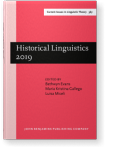Chapter 4
Solving Galton’s problem
Practical solutions for analysing language diversity and evolution
Comparisons between languages can illuminate processes of language change by revealing meaningful
associations between language features or the influence of external factors on the patterns and rates of language change. But
comparisons between languages raise statistical challenges, because close relatives will tend to be more similar to each
other, compared with more distantly related languages, and languages from the same areas will be subject to many of the same
influences. Therefore, observations made on different languages will usually fail to meet the requirement of statistical
independence inherent in standard statistical testing. This fundamental challenge of cross-cultural analysis, known as
Galton’s problem, is no cause for despair because there are a range of workable solutions using widely available data. This
paper discusses a range of practical solutions, including phylogenetic analysis, sister pair comparisons, and spatially
structured models, that can be applied to analyses of language variation and change.
Article outline
- 1.What is Galton’s problem?
- 2.Who has Galton’s problem?
- 3.Practical solutions to the problem of relatedness
- 3.1Solution 1: Use a phylogeny
- 3.2Solution 2: Use taxonomic information
- 3.3Solution 3: Sister pairs
- 4.Practical solutions to the problem of proximity
- 4.1Solution 1: Grid-based spatial data
- 4.2Solution 2: Distance between languages
- 5.Conclusions
-
Acknowledgements
-
References
This content is being prepared for publication; it may be subject to changes.
